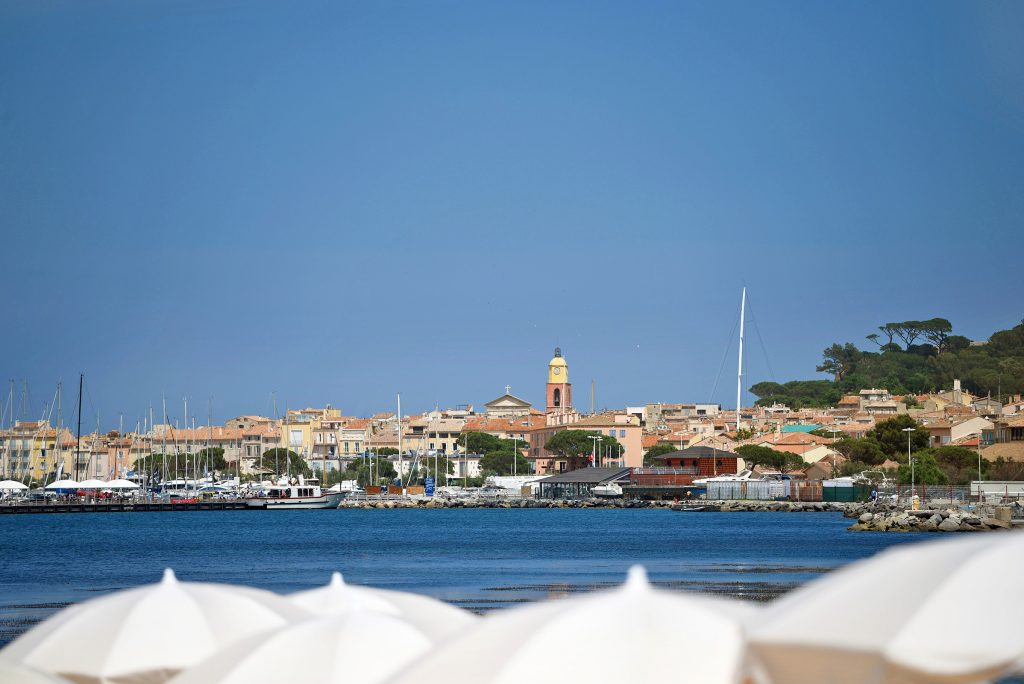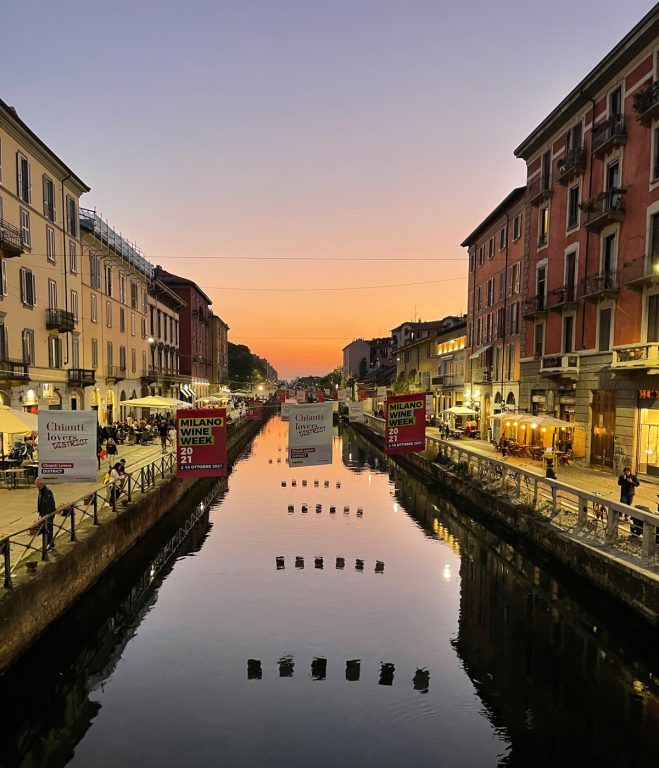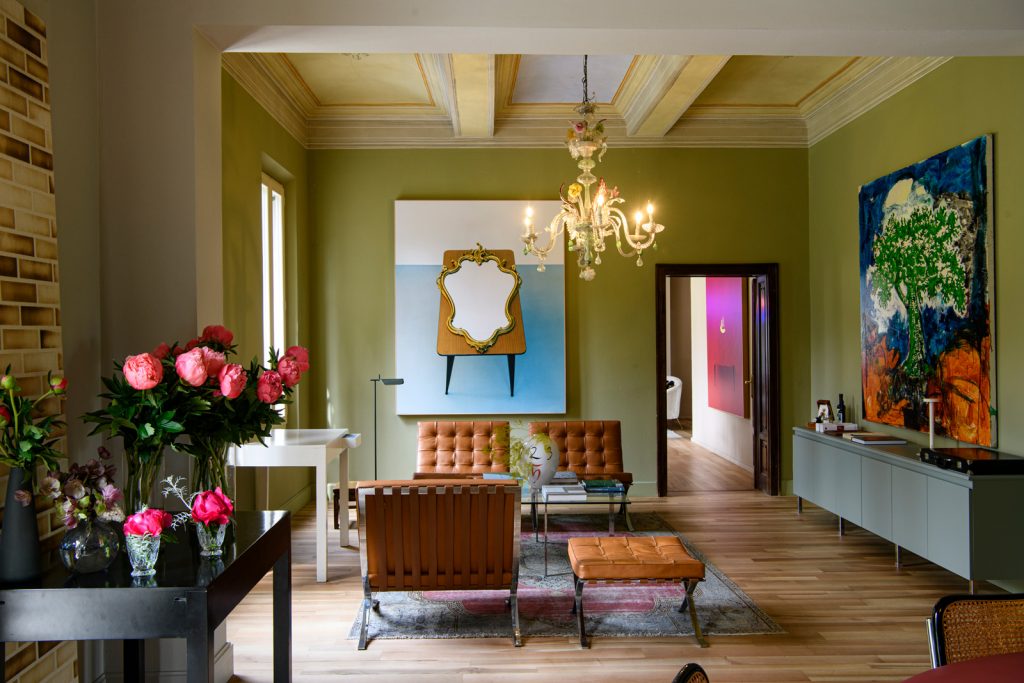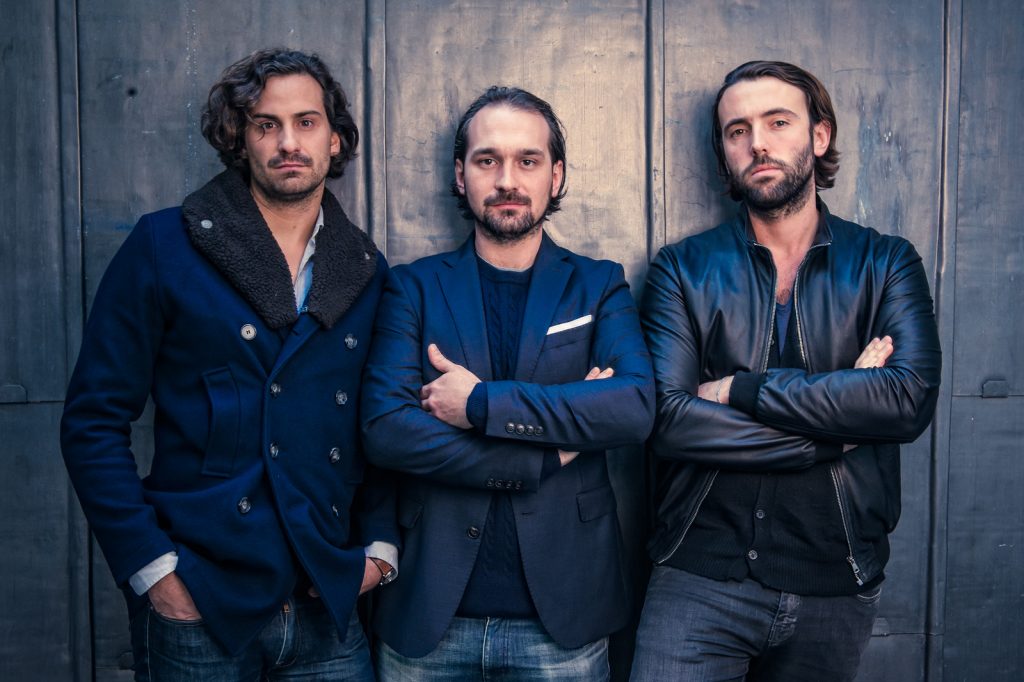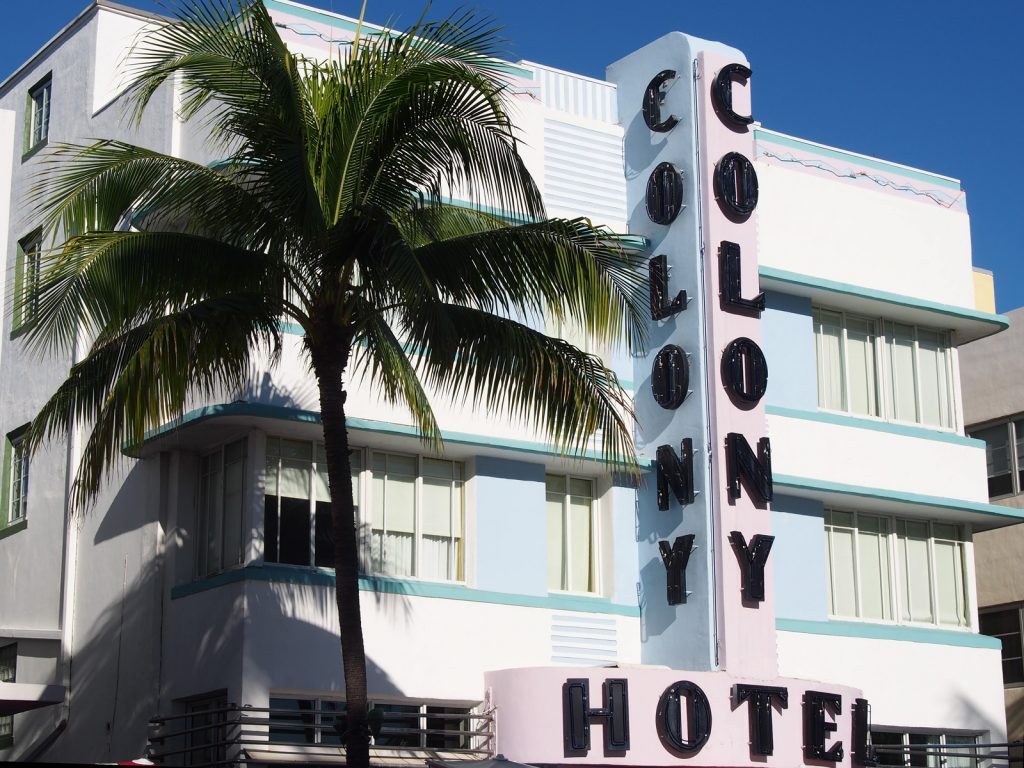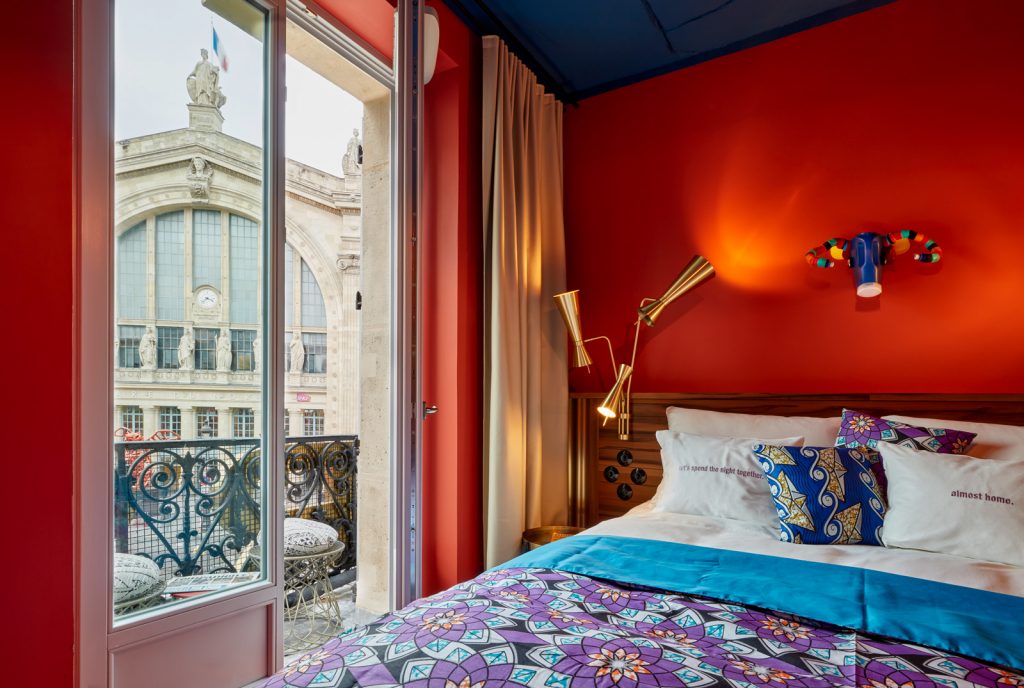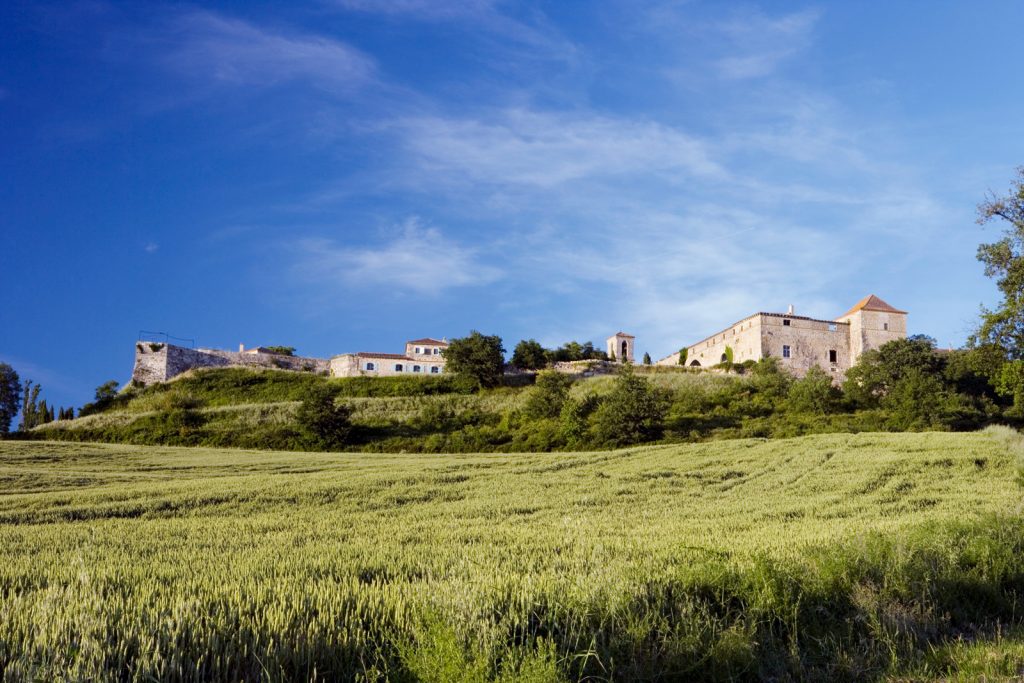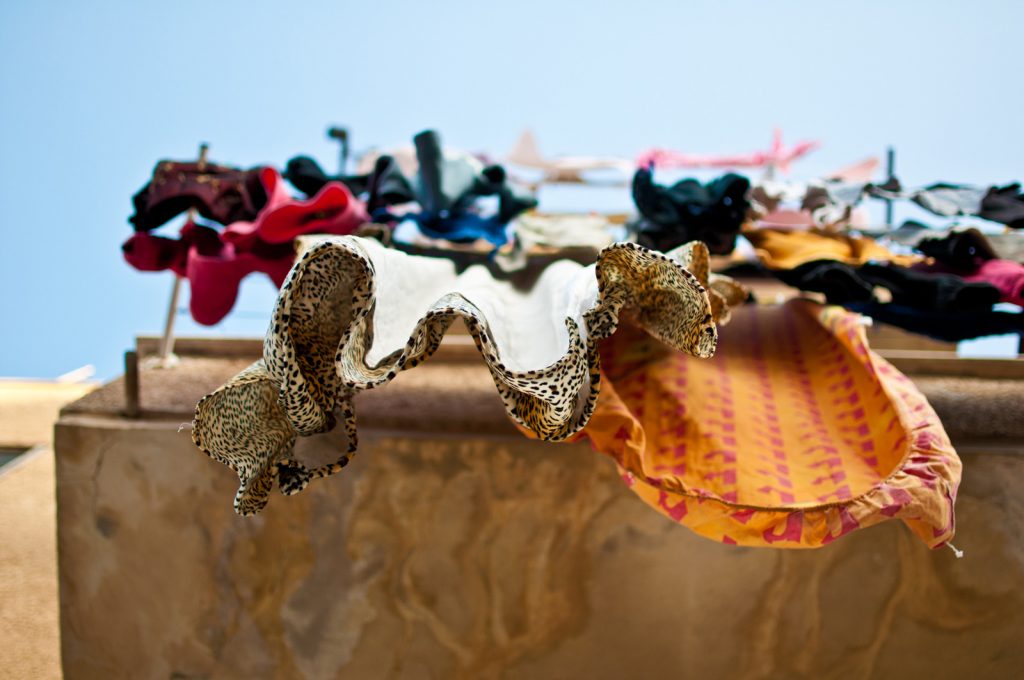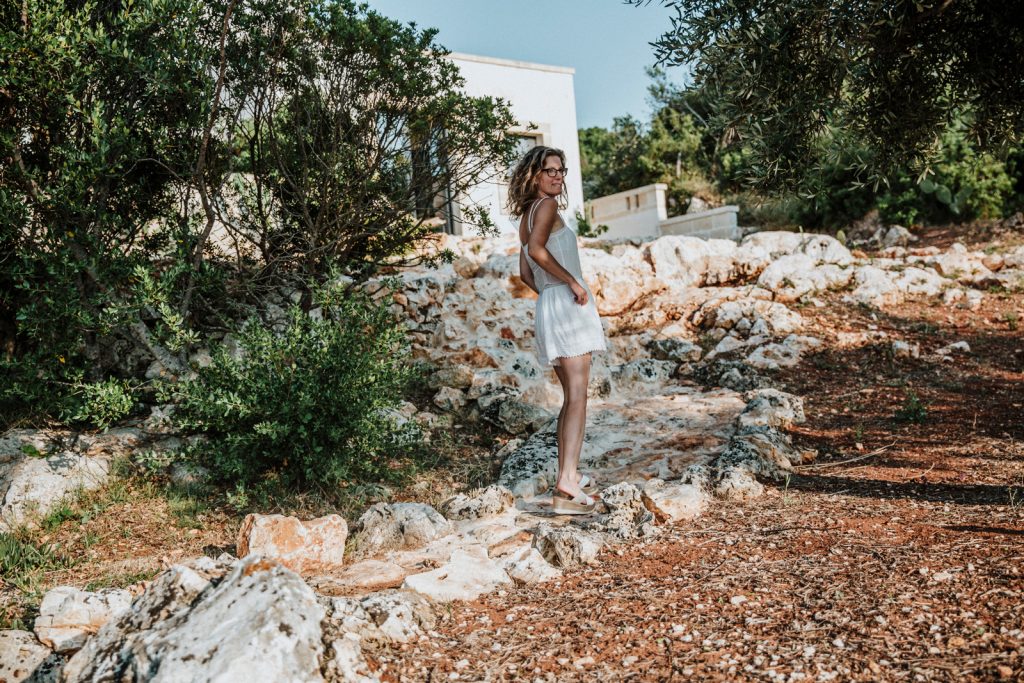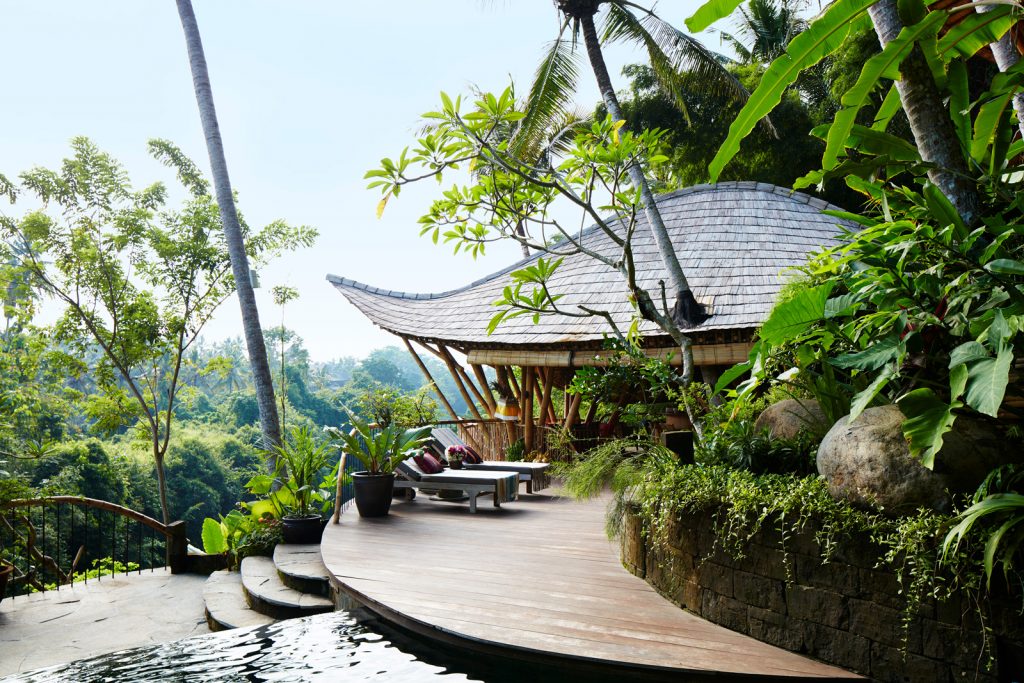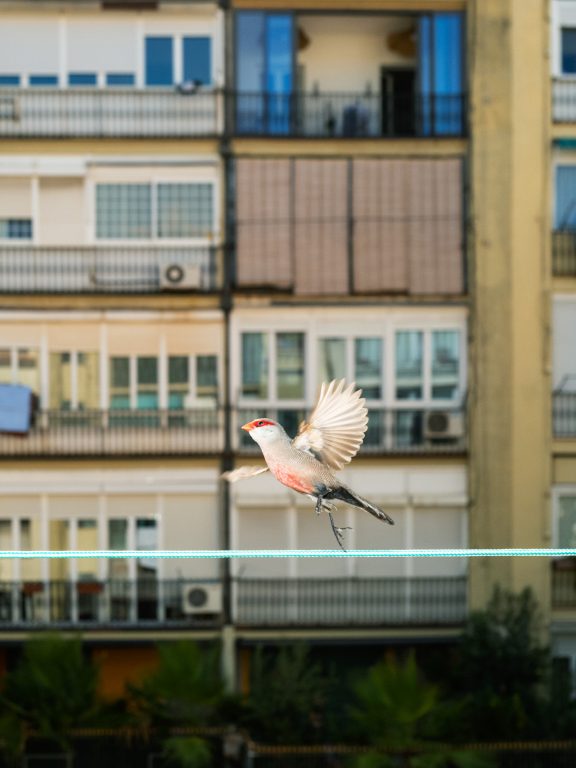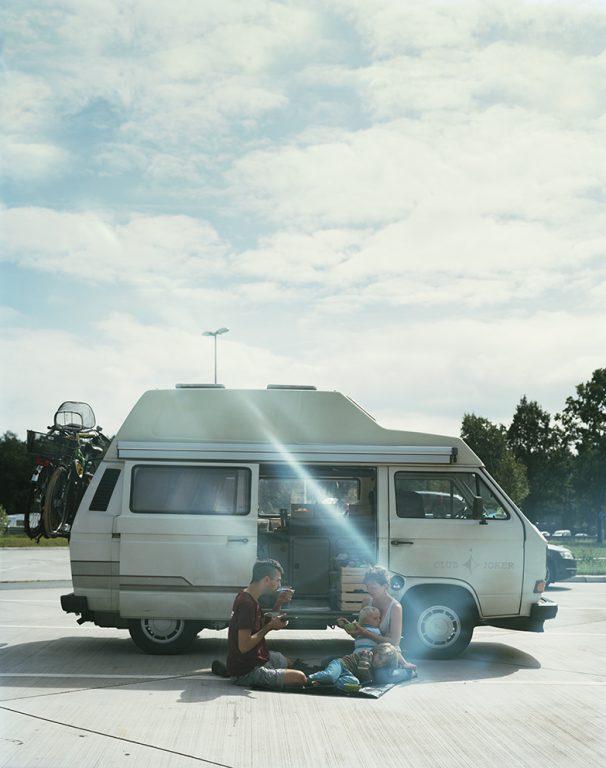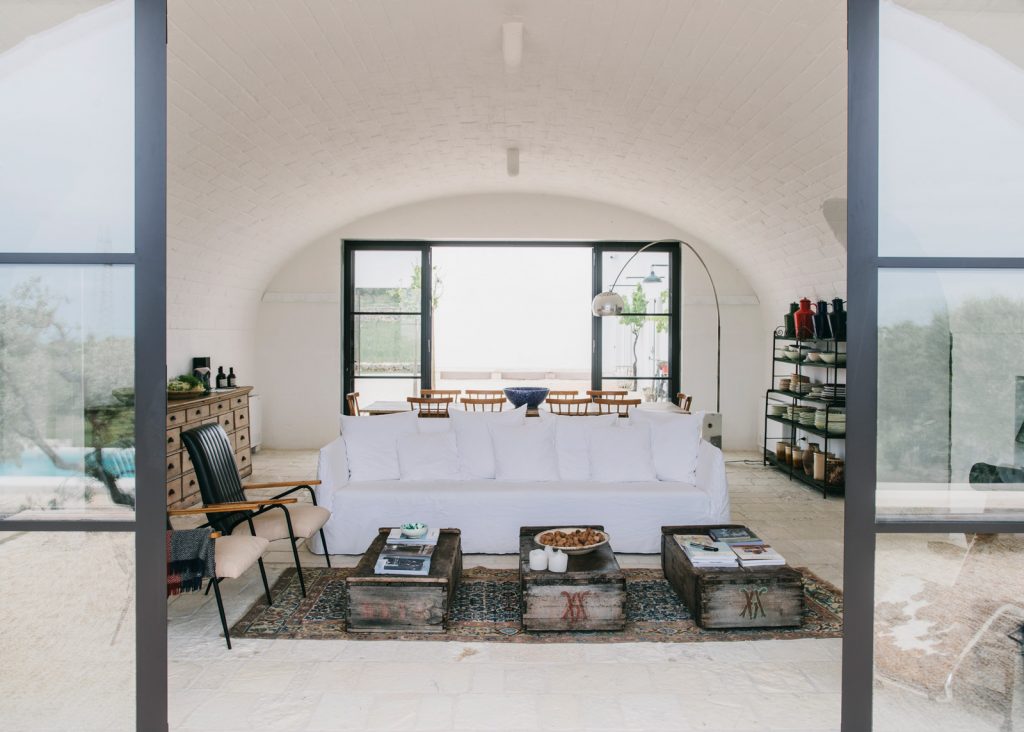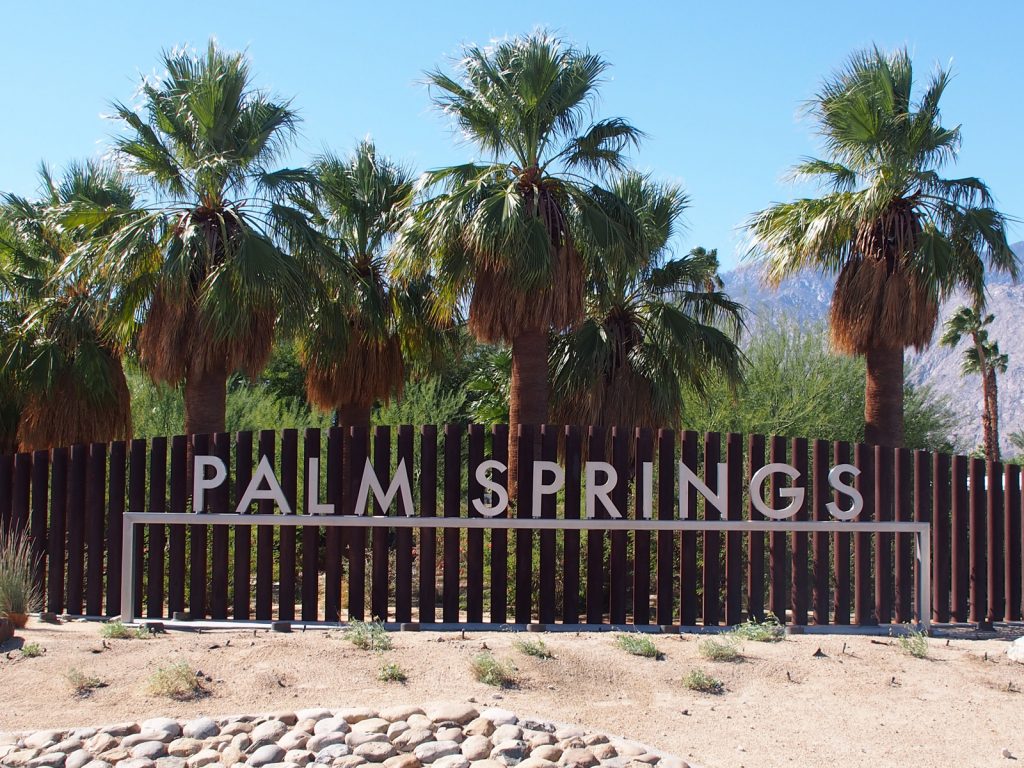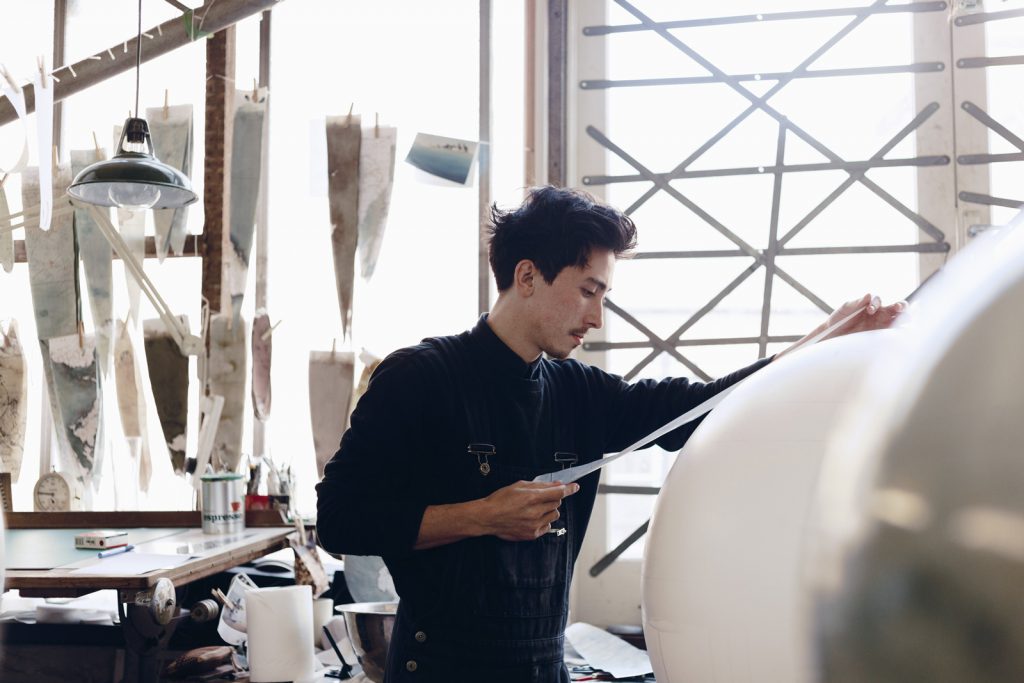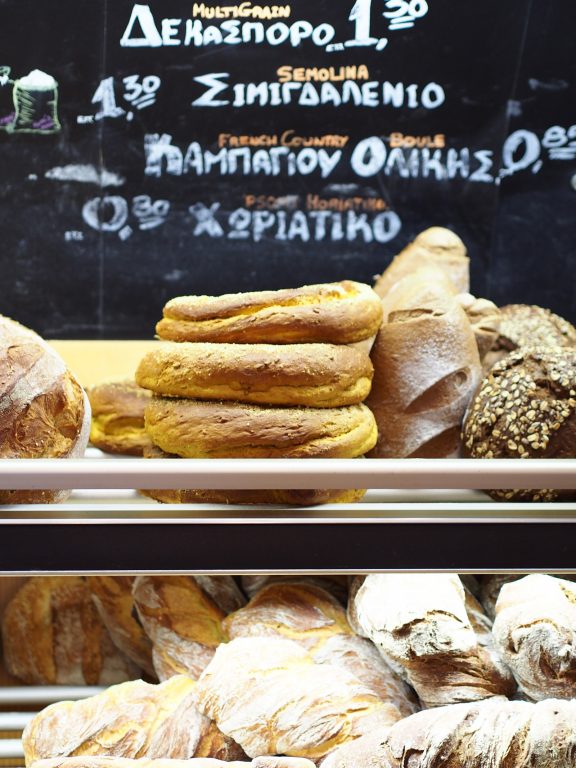POINTS FOR PALMA
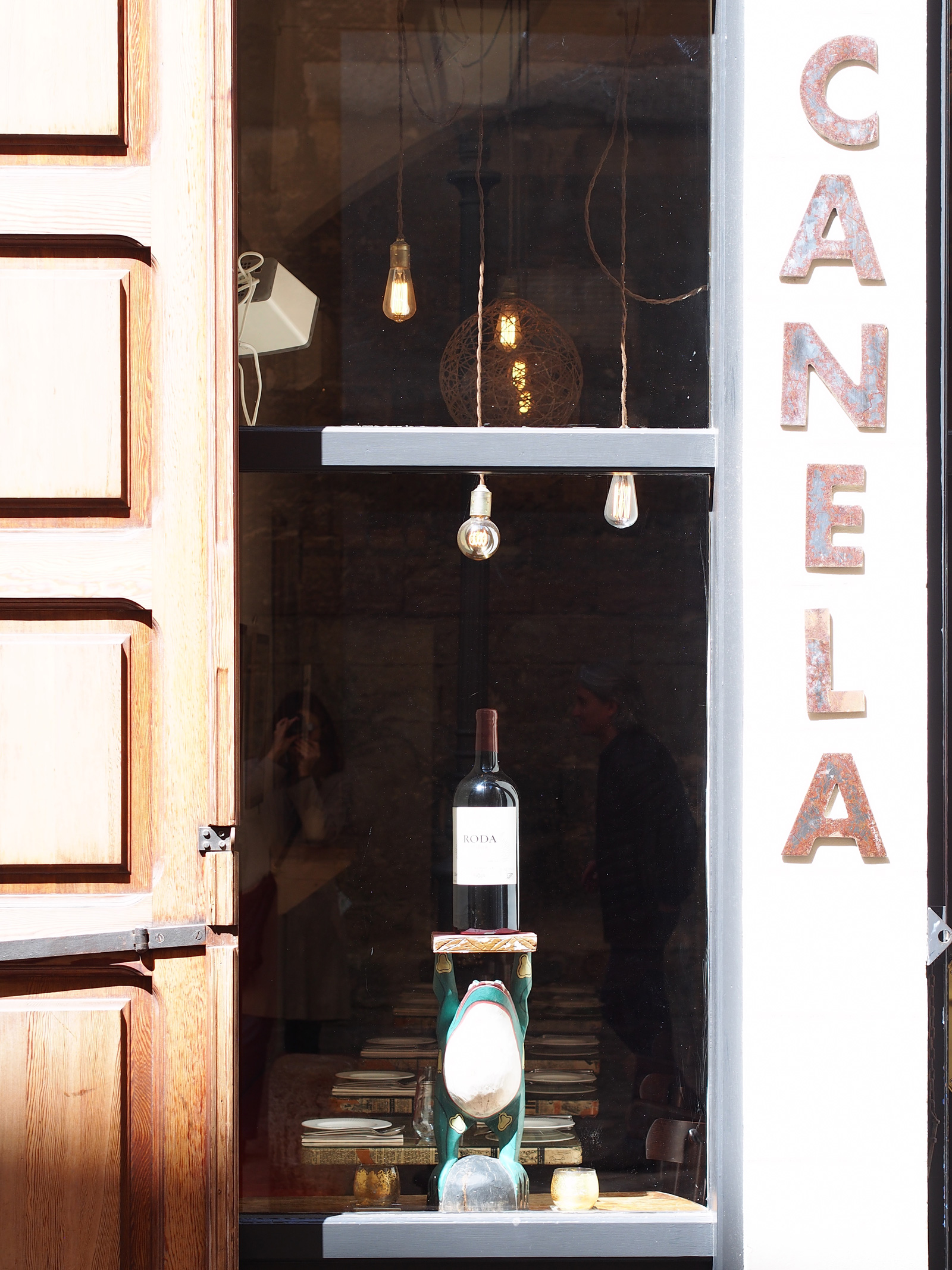
City Whisper
Points for Palma
From a place to leave as soon as possible, Mallorca’s capital has become a destination where people like to stay longer. Trendsetters now travel to Palma as they would to Paris or Portofino – without giving the rest of the island a glance.
May 2021, Reading time: 18 minutes
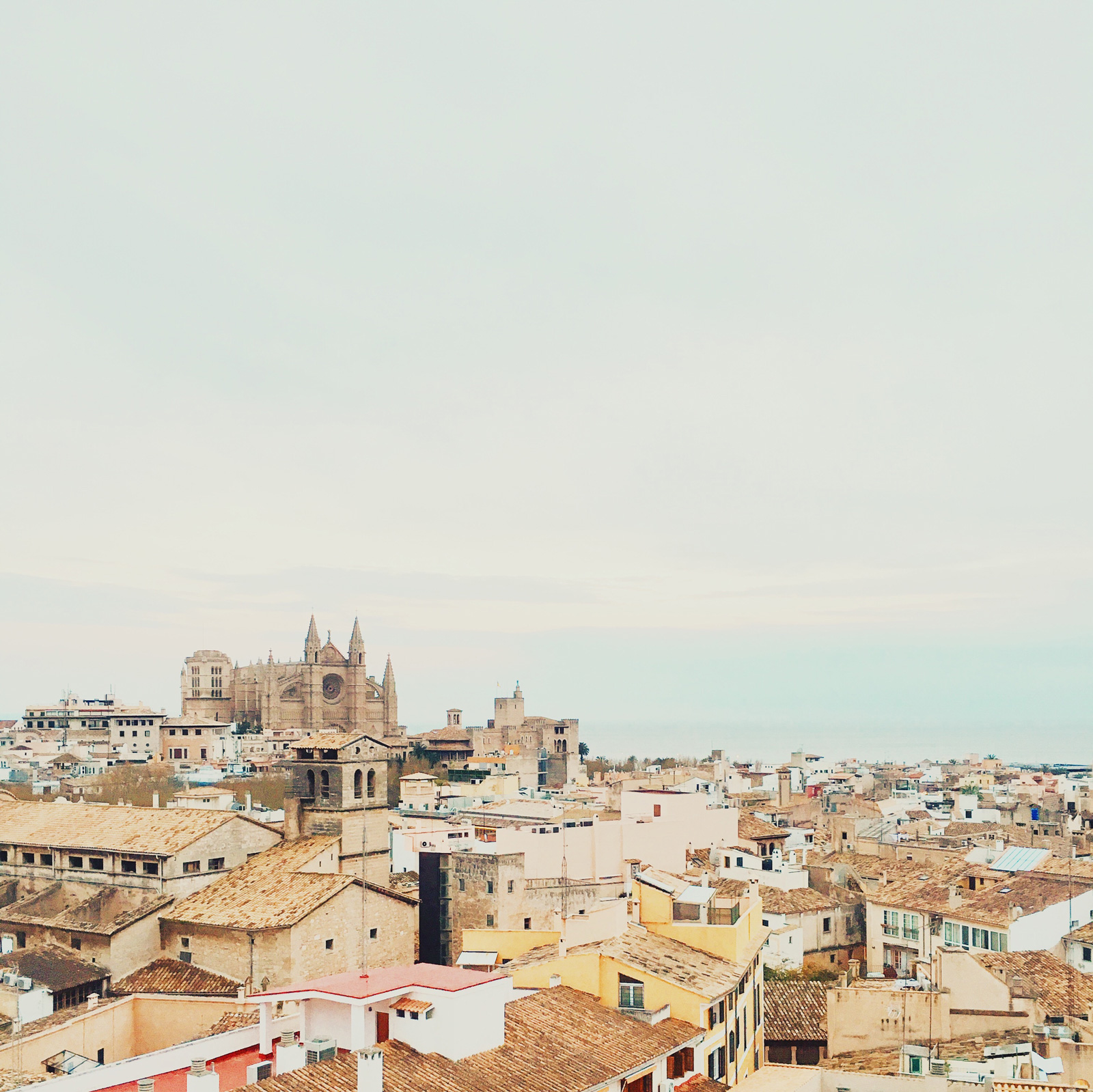
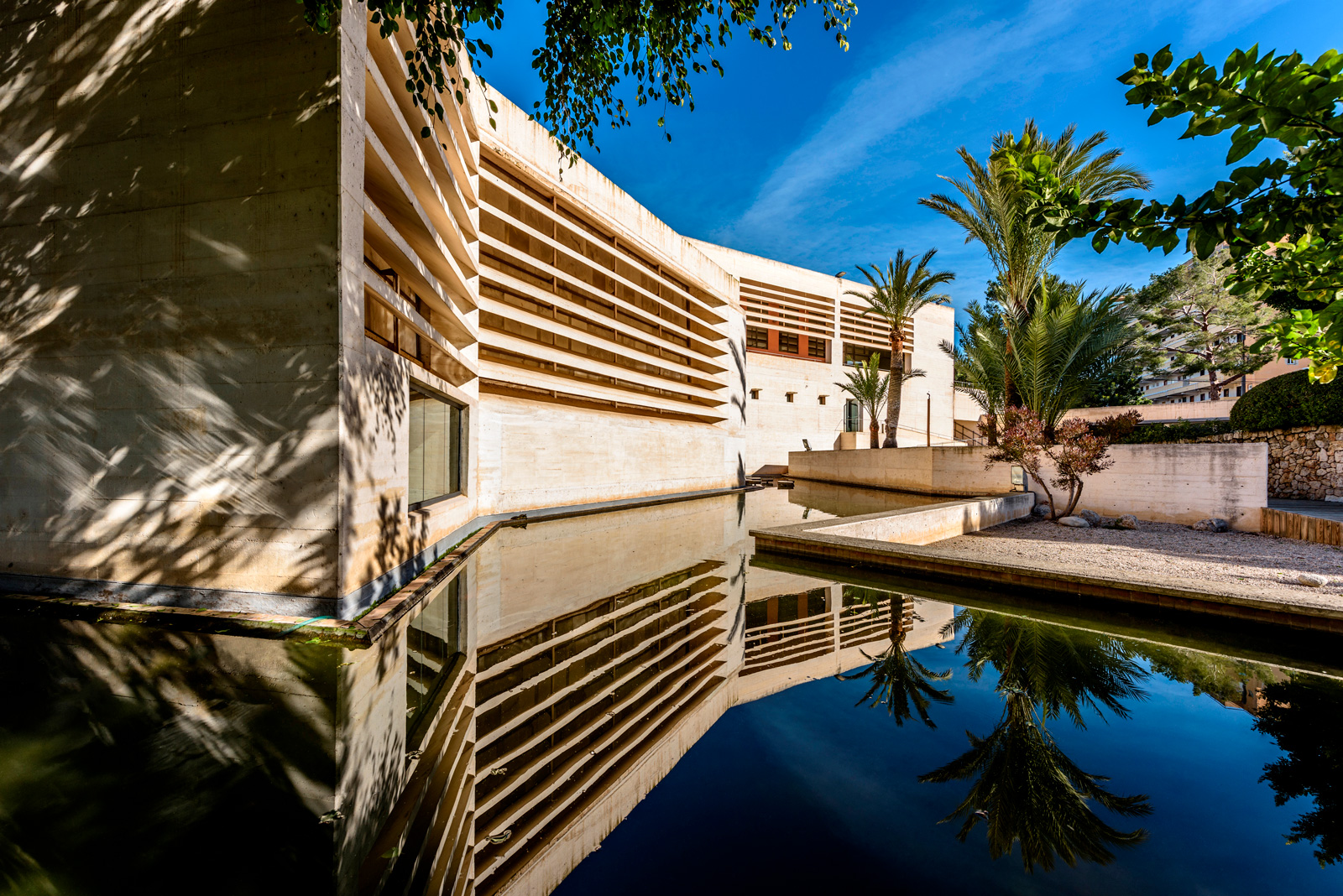
Very top: Canela Restaurant. Middle: Palma’s rooftops and La Seu Cathedral. Top: Fundación Miró Mallorca, photo: Rubén Perdomo.
Be honest, did not almost everyone talk badly about the island? “Island for cleaning ladies”, “giant, cheap hotels”, the party mile “Ballermann” … Mallorca was one of the last places you wanted to go. No other vacation destination in the world has been subjected to so many unattractive prejudices as the largest island of the Balearic Islands.
The image changed when Claudia Schiffer, Michael Douglas, Annie Lennox and other celebrities started spending their leisure time in their own Marllorcan finca about 20 years ago. Suddenly the quiet, rural hinterland of the island was an insider tip. Those who had money and taste owned a lovingly renovated farmhouse there with a pool, bocce court and a vineyard in front of the door.
Nowadays, the party tourism at the “Ballermann” (almost) no longer plays a role. After the hinterland, the visitors discovered the coast and finally, at the very end, the capital Palma. With its avenues flanked by mighty plane trees, its sandstone-paved alleys, its Gothic cathedrals and modernist palaces, Mallorca’s capital has always been beautiful – but also quite run-down. Just ten years ago, many of the magnificent apartment buildings stood empty, the windows boarded up, the streets dark, the squares dirty. No one dared to go into the city center after sunset.
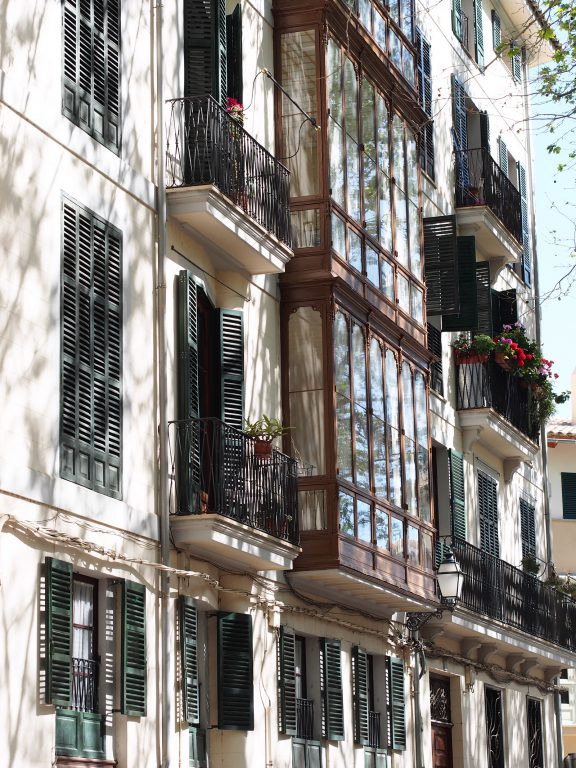
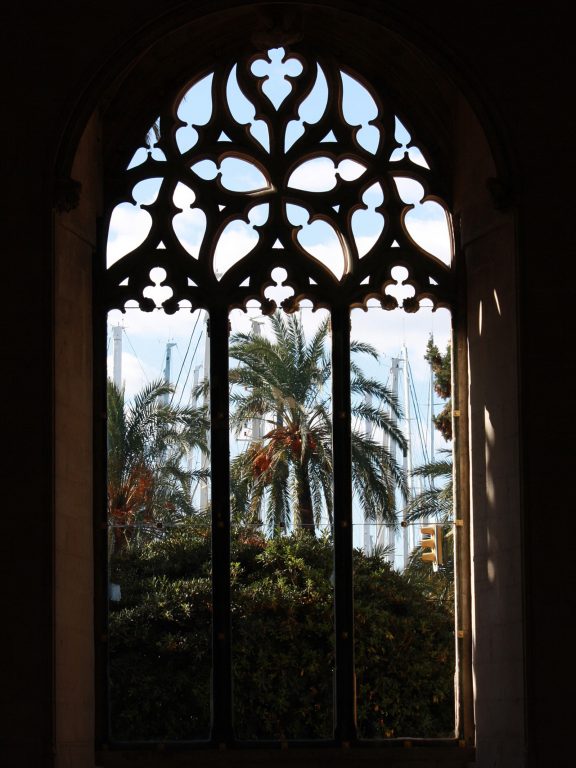
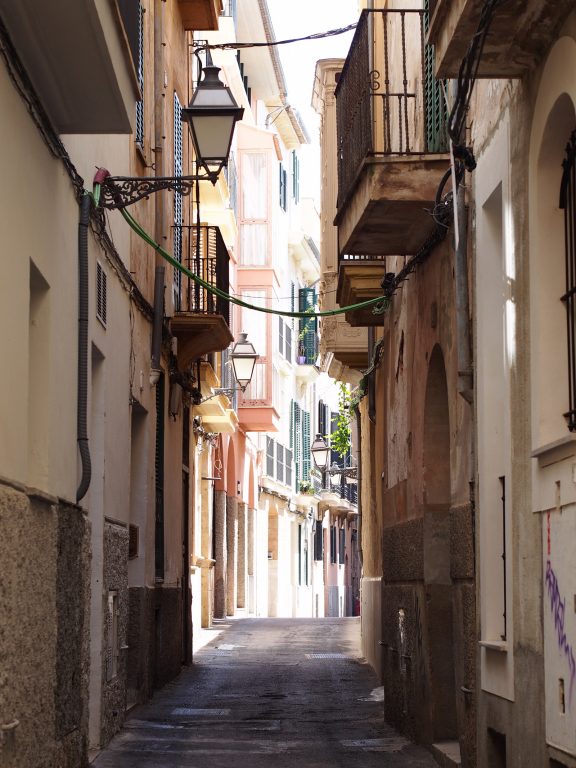
Modernist facades at Plaça Quadrato. Gothic window in the historic building La Lonja de los Mercaderes, photo by Raquel Ojaos. Old town alley.
Today, Palma confidently presents itself as a mini-metropolis with Mediterranean charm. The city of 400,000 has become a destination for urban connoisseurs: “When our hotel opened in 2014 as one of the first boutique hotels ever in Palma, the neighborhood in which we are located was disreputable and neglected,” says Miguel Garcia Feliz, director of the upscale Sant Francesc Hotel Singular, “then gradually other charming guesthouses sprang up around us.” After the hotels came nice cafés, chic shops and good restaurants. Today, the Michelin Guide lists some 14 establishments in Palma, including three with a star.
“The city has become a culinary destination,” Marc Fosh believes. The Brit is owner and chef of the city’s first and, for many years, only Michelin-starred restaurant. “When I opened in 2009, Palma was deserted in the evenings,” he says, “I was also completely alone in culinary terms; there was no one offering gourmet cuisine. In the meantime, many young, ambitious chefs are cooking for many discerning visitors. That was not the case in the past.”
Palma has changed, even the somewhat scruffy district of Santa Catalina has become a hip address with organic shops, designer studios and freshly renovated colorful little houses. Those who inhabit it can buy the finest Iberico ham, Manchego cheese and sun-ripened island strawberries in the neighborhood’s enchanting indoor market. Or order a fair-trade quinoa salad to go with your cappuccino with almond milk at one of the casual sidewalk cafés. Gentrification doesn’t stop at Palma, either – but it’s keeping within bounds. Most visitors to Mallorca still believe that the most beautiful corners of the island are elsewhere – they land and drive on. And all those who prefer to stay in the capital do not find it so bad.
Culture
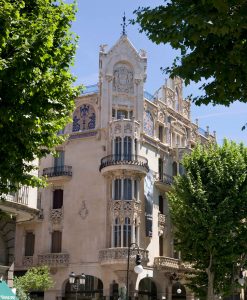
Catalan art:
CaixaForum Palma
The former Grand Hotel is bursting with grandeur and Spanish modernism. The building is home to La Caixa Bank’s Cultural Foundation, and on display are the works of Hermenegildo Anglada Camarasa, a Catalan Post-Impressionist and Art Nouveau painter who died in Pollença on July 17, 1959. His Mallorcan landscapes are on display until the beginning of September. caixaforum.org/es/palma
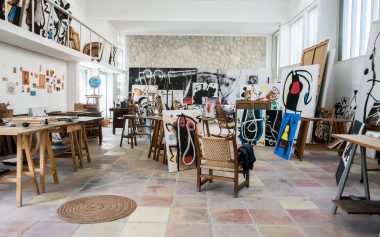
Artist heritage:
Fundació Miró Mallorca
The Fundació Pilar i Joan Miró is located in three remarkable buildings of completely different styles that served as workshops for the Catalan artist until his death in 1983. On display are some 6000 works from Miró’s estate – paintings, drawings and graphic works, as well as sculptures and objects. There are also temporary exhibitions of other artists. miromallorca.com
Photo: Julia Miguel
The fifties:
Galería Pelaires
Josep Pinya’s gallery, which opened in 1969, mainly features art from the 1950s, including works by international greats such as Miró, Alexander Calder, Robert Motherwell and Antoni Tàpies. The Galería Pelaires, with its vaulted rooms, is a must-see for all art lovers and has the longest history of exhibiting contemporary art in Spain. pelaires.com
Food
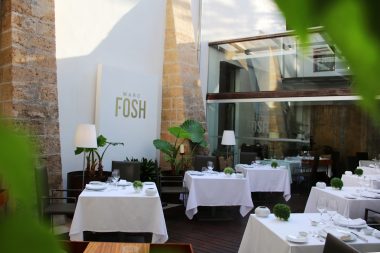
Starred cuisine:
Marc Fosh
London-born Michelin-starred chef Marc Fosh was the first to establish Palma’s reputation as a gourmet destination with pigeon foie gras and orange blossom cream. His produce-based dishes incorporate many a traditional island recipe, and his vegetarian menus are considered a special treat. The simply elegant eatery resides in the light-filled rooms of a former 17th-century missionary school; in fine weather, you can sit on the leafy patio. marcfosh.com
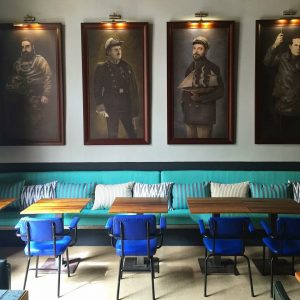
Cult canteen:
Patron Lunares
It’s billed as a fisherman’s pub, but that’s false modesty. The spacious eatery in Santa Catalina not only plays skillfully with cool design and historical elements, but also focuses uncompromisingly on product-oriented sea cuisine: ceviche, tuna tataki or bacalao à la Mallorquina. patronlunares.com
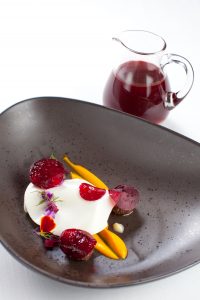
Less is more:
Adrian Quetglas
Unexcitingly beautiful starred restaurant with terrace. Well-informed vacationers and locals sit at handsomely set wooden tables and delight in the quirky, gorgeous-looking selyodka pod shuboy (russian salad). There is only one menu, with five courses at lunch and seven in the evening. Right next door is the wine bar D’gustar, run by Adrián Quetglas, serving great Spanish wines and small delicacies. adrianquetglas.es
Gourmet bargains:
Aromata
At his second restaurant, Michelin-starred Mallorcan chef Andreu Genestra offers creative dishes like foie gras ravioli or hunter’s duck with blood oranges and green curry. The 3-course lunch menu costs 18.50 euros, including bread, water and a glass of wine. In the evening, tables are set in white and lit with candles; the seven-course tasting menu costs 50 euros and is worth every penny. aromatarestaurant.com

Fusion in spanish:
Canela
First Irene Rigo and Fabian Fuster opened a wine bar, then they added tapas, and in 2013 they transformed the family’s old deli into a proper restaurant. Chef Fabian has developed his own fusion cuisine, and menu bestsellers include the fried dumplings (gyozas) with fish filling and the glazed Iberico pork tenderloin. canelapalma.com
Drinks
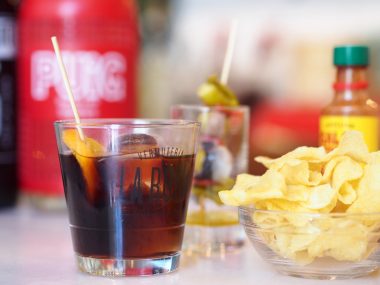
Wine & Dine:
Vermutería La Rosa
Most guests stand in the white-tiled bar room or outside the door, ordering a vermouth on the rocks and some chips with hot sauce to go with it. But with the second glass, you might also get butter-tender grilled octopus, fluffy potato tortilla, fried mushrooms, spinach croquettes on small plates. Everything tastes delicious! larosavermuteria.com

People watching:
Cappuccino Grand Café
Directly opposite the baroque town hall and right next to Mallorca’s oldest olive tree are the tables and chairs of what is currently probably the most popular café in Palma. Locals and tourists alike enjoy the colorful hustle and bustle, the buttery giant croissants, the delicious cakes and the excellent cappuccino. cappuccinograndcafe.es
Photo: Nicolas Matheus
Speakeasy style:
Clandestino Cocktail Club
Only a tiny nameplate indicates the existence of the bar, which is 50 square meters at best. Every evening from 6 p.m., Marion and Sergi welcome you with innovative cocktails, cool music and their nice, very personal manner. If you wish, you can also get something to eat from the Canela restaurant directly across the street. Carrer de Sant Jaume 12
Sleep
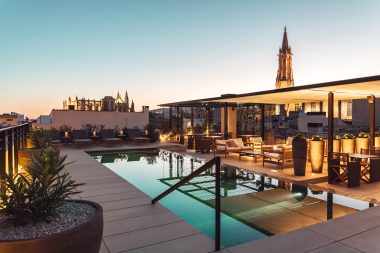
Contemporary Palazzo:
Sant Francesc Hotel Singular
This stylish five-star hotel is in a landmarked 19th-century palace. The lobby, patio, and 42 rooms and suites have an urban, cosmopolitan feel, and you’ll be pleased to see free-standing bathtubs and original frescoes on some ceilings. The Quadrat restaurant scores with fine Mediterranean cuisine and a terrace, and the rooftop terrace with bar and pool is a highlight of the hotel. Double rooms from 225 euros, hotelsantfrancesc.com

Vintage charm:
Hotel Cort
14 beautiful suites and two double rooms in a former bank building right on Plaça de Cort. Spacious and bright rooms with whitewashed wood ceilings, velvety plank floors, and comfortable, wide beds. Plus, there’s a chic vintage bodega-style restaurant with ambitious Mediterranean cuisine and a nice terrace out front. Double rooms from 165 euros, hotelcort.com
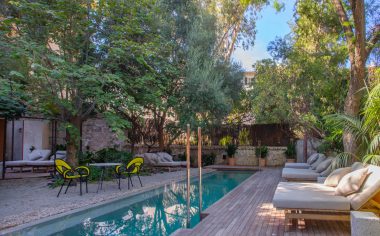
Park with pool:
Can Bordoy
Calle Forn de La Glòria is a busy old-town street – yet Can Bordoy Grand House & Garden is considered an intimate oasis of calm. The medieval aristocratic palace houses 24 differently designed suites that are at once modern and antique, minimalist and opulent. Plus an elegant spa, an organic gourmet restaurant, a romantic rooftop terrace, and a large private park with heated outdoor pool. Suite from 303 euros, canbordoy.com

Parisian chic:
Hotel Mamá
Hotel Mamá, with 32 rooms, Japanese restaurant, private cinema, pool and spa, was designed by Parisian star decorator Jacques Grange who is synonymous with opulent elegance and supreme living comfort. Here he opted for a cheerful mix of patterns and colors, for colorful mosaic tile floors and floral wallpaper. Double room from 220 euros, hotelmama.es
Photo: Nicolas Matheus
Nightlife included:
Bosch Hotel
Six chic suites above the famous Bar Bosch, a favorite hangout for locals since 1936. They score with wood floors, wood ceilings, great bathrooms, and purist furnishings, as well as delicious market cuisine served in the first-floor restaurant. Double rooms from 77 euros, hotelbosch.com
Shopping

Live more beautifully:
Casa Lima
Swiss Marc Kuenzle has lived in Mallorca for a long time, but it wasn’t until February of this year that he opened his high-end home decor store. Almost everything sold here was created on the island: heavy wooden tables and armchairs, huge clay vases, filigree lanterns or colorful decorative pillows. Those who do not own a finca on Mallorca can have their purchases delivered to them. casa-lima.es
Bread and more:
Fornet de la Soca
A bakery like a picture book: tiny, with a visible bakery and showcases full of delicacies. Owner Tomeu Arbono has won awards for the best bread in Spain, and his wife Maria José stands in the store selling cakes filled with codfish (pasteló), lard tarts (ensaimada) and dainty chocolate cakes. Everything can be taken away or eaten on the wooden bench outside the door. fornetdelasoca.com
Espadrilles:
Magatzem de Santa Catalina
A heavenly kingdom of espadrilles! In cobbler Domingo Moya’s small boutique, one eye-catcher stands next to the other, and it’s hard to narrow down to just one pair of the colorfully patterned, handmade fabric shoes. Domingo produces them himself on his farm in the north of Mallorca and offers accessories such as hats, bracelets and woven baskets. Placa Navegació 2 A
Fine chocolate:
Cachao
In his small chocolate factory in the trendy Santa Catalina neighborhood, Tino Wolter produces chocolate from 100% unroasted cocoa beans and other sustainable-organic ingredients, often sourced locally (fleur de sel, oranges). Bestsellers include the “Rosemary and Walnut”, “Coffee”, “Apricot and Lavender” varieties, as well as each of the Berlin native’s latest experiments. cachao.eu
Markets
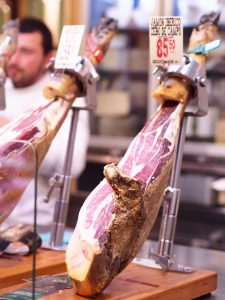
Best known is the large indoor market in the old town: Mercat de l’Olivar (mercatolivar.com) with great fish and vegetable offerings and stalls where you can eat Iberico ham, oysters or fried sardines. Similar but smaller and less touristy is the indoor market in Santa Catalina (mercatdesantacatalina.com). Gourmets head to Mercado Gastronómico de San Juan (Carrer de l’Emperadriu Eungènia 6), where fancy food stalls offer sushi, fried duck liver and other delicacies. Every Tuesday and Saturday morning, the organic market on Plaça dels Patins tempts visitors with eco-products from Mallorca.
My Palma
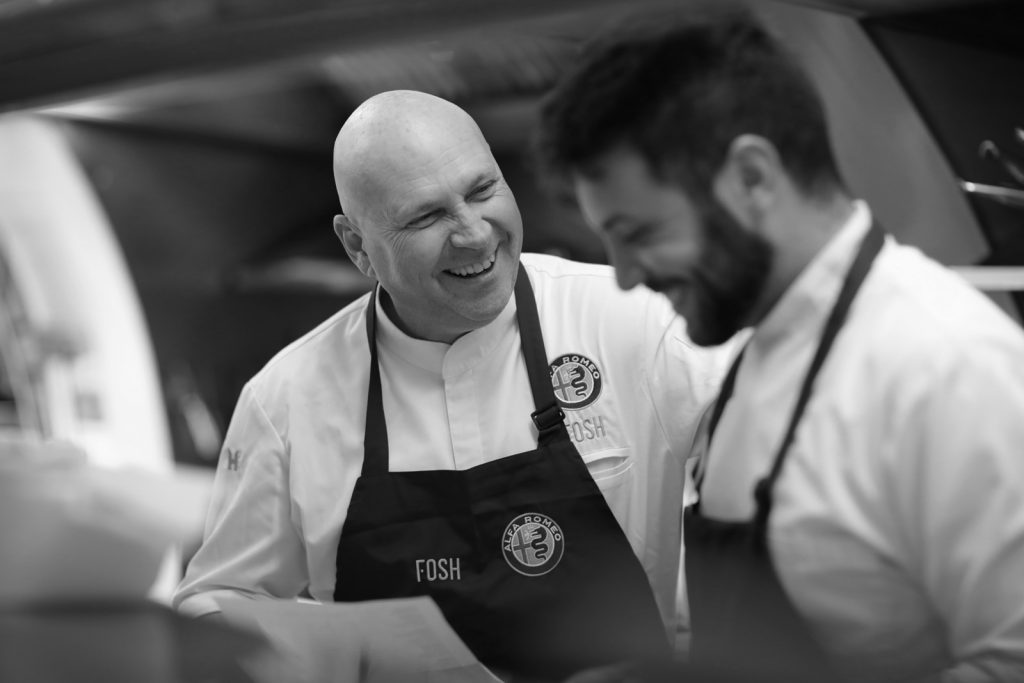
Marc Fosh,
star chef
I like to start my day with a walk among the flower stalls on the Rambla. Just around the corner, a young couple runs Rosevelvet Bakery (Calle Missió 15). Here they serve the best organic coffee in town and homemade patisserie that I can’t resist. After breakfast, I head to Mercat de l’Olivar (mercatolivar.com) to get inspired by the great local produce. The fish hall is terrific, with an oyster bar in the middle with a good champagne selection. When the weather is nice, I bike along the coast to Sa Roqueta (restaurantesaroqueta.com). This simple eatery in a quiet alley not far from Portixol harbor is known for grilled fish, lobster and shrimp, but beware: it’s not cheap! Simple, Spanish fare is available at Casa Maruka (restaurantecasamaruka.com). The food is hearty and delicious, the wine decent and affordable. My favorite museum is the Museu Fundación Juan March (march.es), located in a 17th-century building. On display are the works of famous Spanish artists such as Pablo Picasso, Joan Miró, Juan Gris and Salvador Dalí. In the early evening, I like to go to Vermutería La Rosa (larosavermuteria.com), a noisy, lively tapas bar. Later, I visit my friend Rafa Martin at the Brass Club (brassclub.com). Rafa is one of Spain’s best-known barmen, serving impressive cocktails in his small bar. The best view is from the Sky Bar at Hostal Cuba (hotelhostalcuba.com). On summer nights, this is the best place to chill out with a mojito and take in the special flair of Palma.
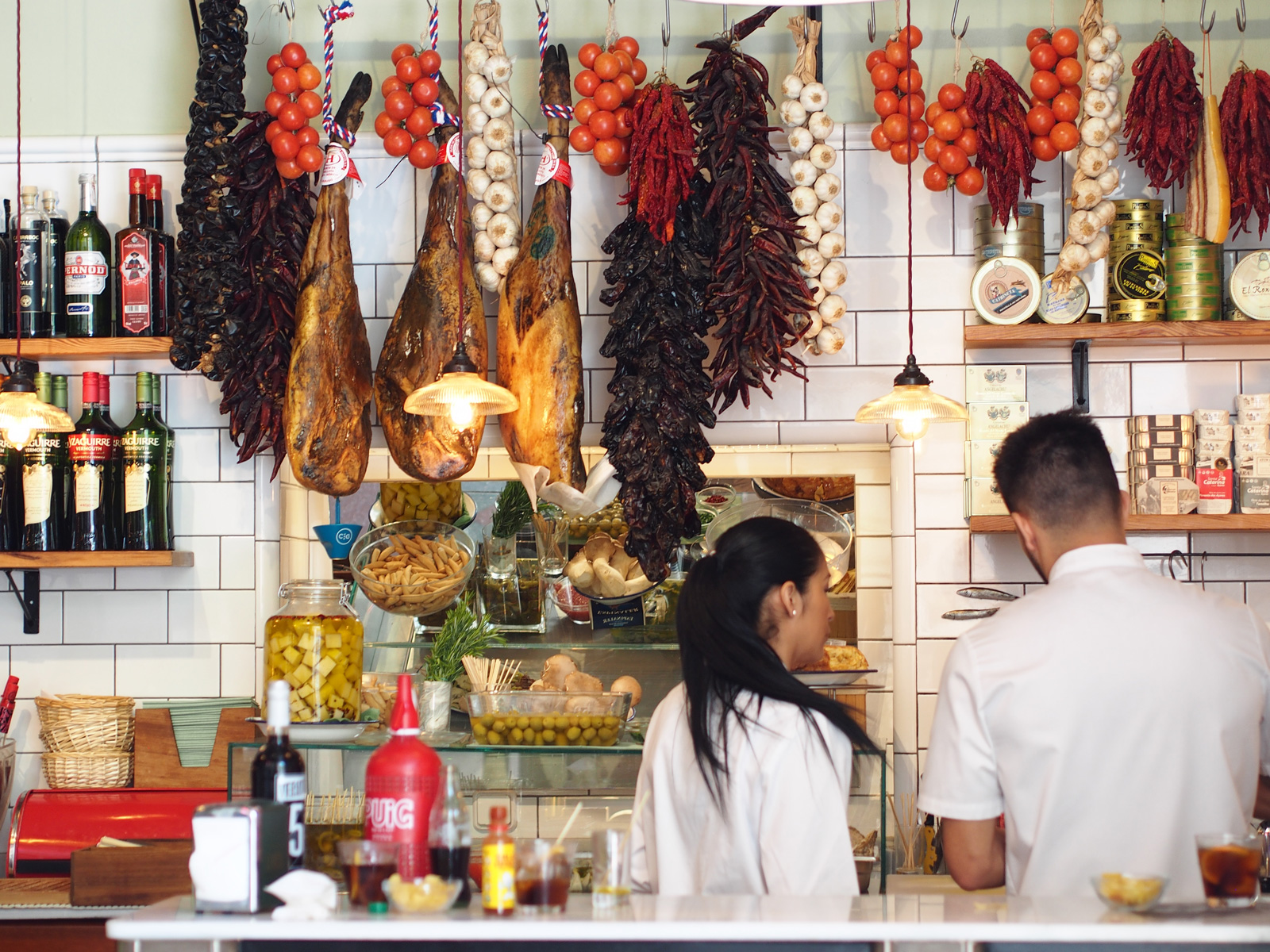
Spanish delicacies in the Vermutería La Rosa.

Staircase in the Museu Fundación Juan March, photo: Xisco Bonín.


